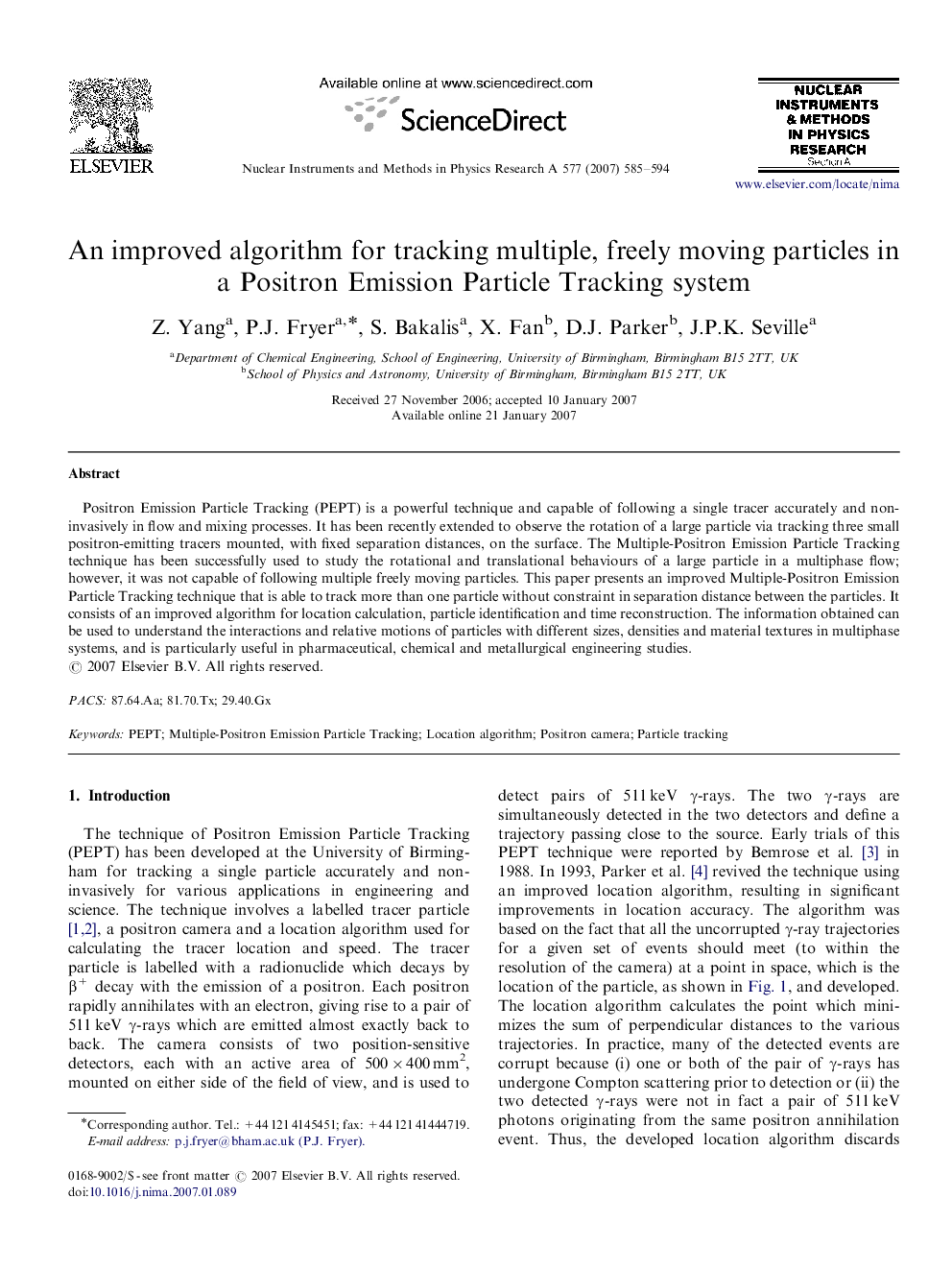| Article ID | Journal | Published Year | Pages | File Type |
|---|---|---|---|---|
| 1831495 | Nuclear Instruments and Methods in Physics Research Section A: Accelerators, Spectrometers, Detectors and Associated Equipment | 2007 | 10 Pages |
Positron Emission Particle Tracking (PEPT) is a powerful technique and capable of following a single tracer accurately and non-invasively in flow and mixing processes. It has been recently extended to observe the rotation of a large particle via tracking three small positron-emitting tracers mounted, with fixed separation distances, on the surface. The Multiple-Positron Emission Particle Tracking technique has been successfully used to study the rotational and translational behaviours of a large particle in a multiphase flow; however, it was not capable of following multiple freely moving particles. This paper presents an improved Multiple-Positron Emission Particle Tracking technique that is able to track more than one particle without constraint in separation distance between the particles. It consists of an improved algorithm for location calculation, particle identification and time reconstruction. The information obtained can be used to understand the interactions and relative motions of particles with different sizes, densities and material textures in multiphase systems, and is particularly useful in pharmaceutical, chemical and metallurgical engineering studies.
